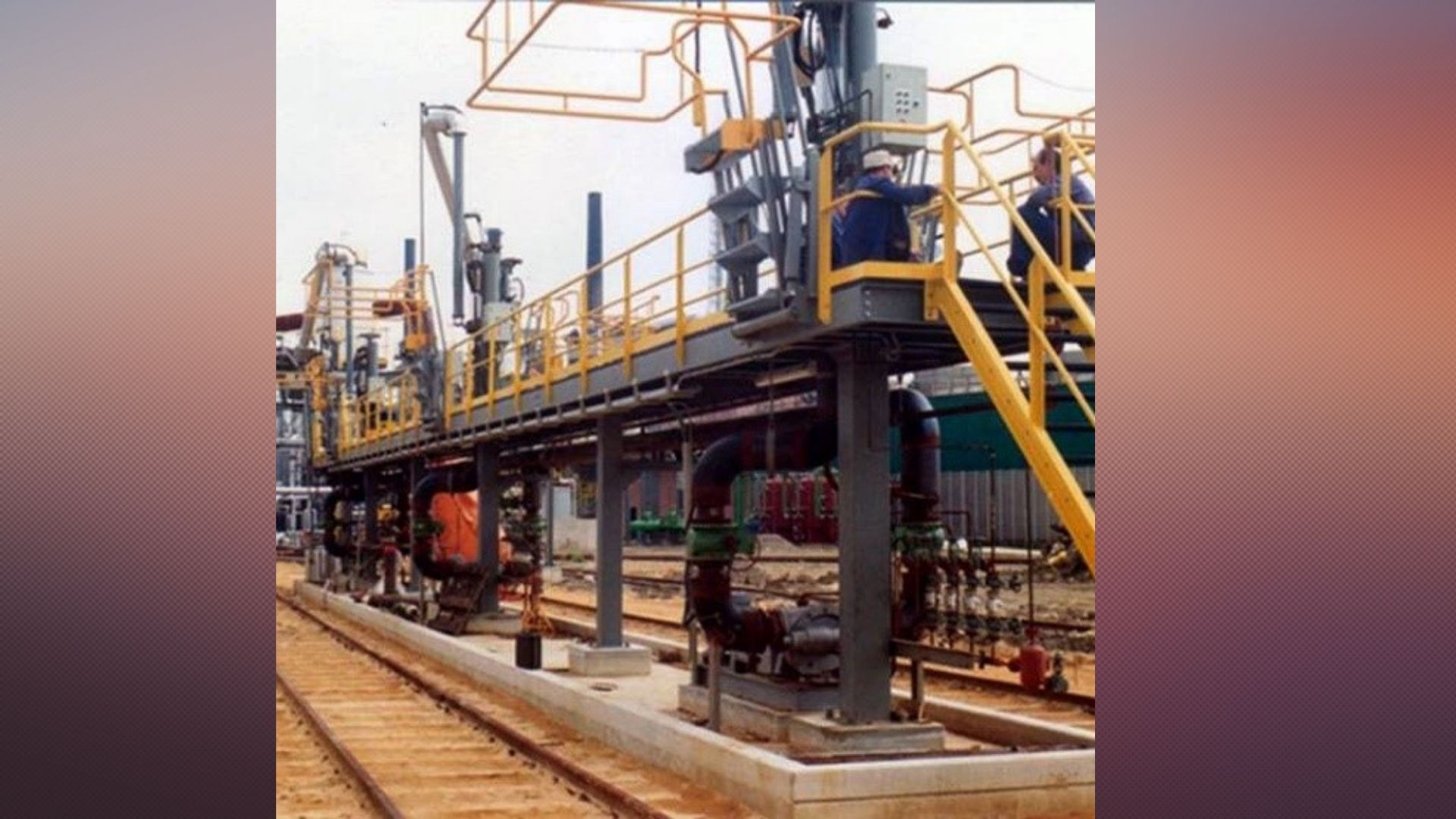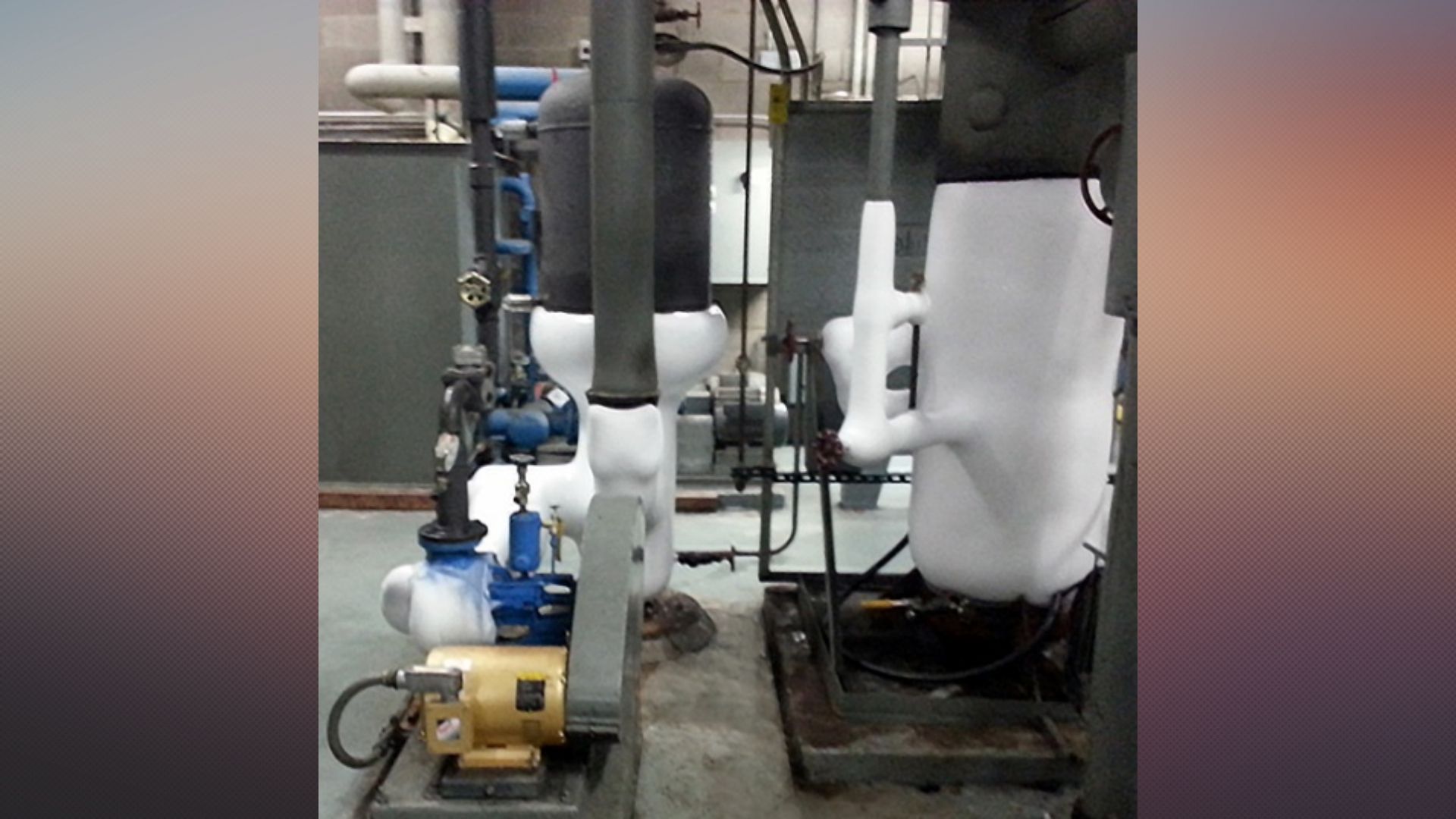In the world of gear pumps, it is common to have liquid handling applications where pressure and vacuum are of concern. So, we wanted to share our perspective and recommendations, to help with making pump choices and decisions for the various pressure and/or vacuum scenarios you may encounter.

Concerns: What should we be concerned about when pumping with a suction lift? At least the following:
- Actual distance, in feet, between the liquid level and the pump suction port (static suction lift)
- The vapor pressure of the liquid at the pumping temperature
- The size, length, and makeup of the suction line
- The number and type of fittings and valves in the suction line
- The viscosity of the liquid
- The altitude of the installation
Applications: Common applications involving suction lifts are: (1) pumping fuel oils and solvents from underground storage tanks; (2) pumping oils, syrups, and fish solubles from storage tanks located on a floor below the pump, and (3) rail car unloading through overhead piping arms.
Recommendations:
- If the ability of a gear pump to lift the liquid from the bottom of a buried circular tank (long axis horizontal) is marginal because of the depth of the tank, we often consider that the bottom quarter of the tank diameter is below the normal liquid level since the tank would be almost empty. If the customer should pump out this part of the tank and the pump was to be a little noisy, it would probably not be objectionable for the short period of time involved and would not be particularly harmful to the pump.
- An item of concern when pumping from buried tanks is the temperature of the liquid. A buried tank does not have a very wide temperature range, but the pump often is exposed to atmospheric extremes. Depending on the liquid, the pump may have to start with an extremely viscous liquid in it during cold weather, or it may become vapor bound when starting in hot weather.
- Regardless of how desirable it is to know all the details when working with a suction lift, often the time and effort spent in getting this information is not justified when reasonable assumptions can be made. Many times, when the name of the liquid is given and a temperature can be approximated, we can determine the approximate viscosity and vapor pressure involved. In most instances, it is safe to assume that the pipe size will be the same as the port size of the pump, and that the horizontal run does not exceed the vertical run of piping; also, that there probably are no more than two elbows and one gate valve in the suction piping.
- If, with these basic assumptions, calculations indicate that the pump is required to develop no more than 10” to 15” Hg vacuum and that the liquid will not vaporize in the pump under the vacuum conditions calculated, we would feel reasonably safe in making a pump recommendation. It is wisest, whenever there is any doubt about the details of the suction side conditions, to get the exact information. Where this is impractical, make logical assumptions and then state the assumptions on which the pump recommendation is based, so there will be no misunderstanding.
Concerns: What should we be concerned about when pumping a high vapor pressure liquid? If the Net Positive Suction Head Available (NPSHa) is given, additional information about the suction side is not necessary. If the NPSHa is not given, then the following information should be gathered:
- Vapor pressure of the liquid at the pumping temperature
- The viscosity
- The submergence or the height (H) of the liquid level above the suction port
- The size, length, and makeup of the suction line
- The number and type of fittings and valves in the suction line
- The specific gravity of the liquid
- The pressure on the discharge side of the pump (system working pressure)
- The differential pressure across the pump
Applications: Common applications involving pumping high vapor pressure liquids are: (1) transfer of LP gases, such as propane and butane; and (2) low pressure transfer or recirculation of refrigeration ammonia.
Recommendations: The key to successful pump operation when handling a high vapor pressure liquid is to get the liquid to the pump without having it boil or vaporize. In other words, make sure the NPSHa is greater than net positive suction head required. When NPSH is an issue due to high vapor pressure, consider the following to increase NPSHa:
- Use piping larger than the pump port.
- Use full open valves (never globe).
- Be sure strainers are adequately sized, so there is negligible pressure drop.
- Keep the inlet to the suction away from turbulent spots in the sump or supply tank.
- Avoid heat pickup from the atmosphere, from internal valves, or from excessive slip because of high operating pressure.
- Bleed the lines before restarting a pump to keep vapor from locking the pump.
- Where possible, provide 4 feet, or more, of liquid above the pump.

Concerns: What should we be concerned about when pumping from a high vacuum? At least the following:
- The actual vacuum over the liquid in the vessel is of prime concern. (This may be expressed as Hg, mm Hg, etc.)
- The viscosity
- The height (Hz) of the liquid above the pump
- The size, length, and makeup of the suction line
- The number and type of fittings and valves in the suction line
(Note: Vapor pressure is not normally of too much concern. Often the function of a vessel under a high vacuum is to remove vapor, or boil, or distill off a portion of the liquid. Thus, unless the pump has to develop a vacuum higher than that over the liquid, there is no chance of vaporizing at the pump.)
Applications: Typical applications involving pumping from a vessel under high vacuum are: (1) soybean oil processing; (2) removing the water vapor from syrups and candies; (3) degassing transformer oils; and (4) dry cleaner stills.
(Note: It is not necessary to shy away from an application involving 28” or 29” Hg of vacuum. By understanding the system and how to locate the pump, this type of application can be handled satisfactorily.)
Recommendations:
One point to remember when pumping from a high vacuum is that the pump is at the low point in the system and, therefore, is always wetted. It does not have to evacuate a line full of air or vapor, as it does when pumping with a suction lift. With the pump always wetted and no appreciable danger of vaporizing at the pump, it is possible to operate satisfactorily with higher than what would be considered normal vacuum at the pump.
When pumping a viscous material from a vessel under vacuum, be sure that the pressure gained by elevation is not more than offset by pressure drop through the line. This can be avoided by using sufficiently large pipe or lower flow rates.
Pumping in a System with a High Internal Pressure Concerns: What points should be given special attention when pumping with high system or high internal pressures?
- Concerns are basically the same as when pumping high vapor pressure liquids, except there is no tie between the pressure and the particular liquid or temperature since the pressure is a function of some outside force rather than vapor pressure.
- Because the pressure may be higher than expected with a positive displacement transfer pump, particular attention should be given to the construction, from the standpoint of pressure tightness and strength.
Applications: Typical applications involving a high system pressure are: (1) pipe line sampling; and (2) a system pressurized with gas or some other force with the pump being used to meter or circulate.
(Note: For an application with only a 25-psi differential pressure, but a 500-psi system pressure, do not assume because of the low differential from suction to discharge that any pump can do the job. Before a pump can be considered for such an application, it should at least have a balanced seal or a mag drive, O-ring gaskets, and possibly a higher flange rating.)
Recommendations: A general rule of thumb for this type of system is: “Be Careful!”
- Check the pressure rating of the shaft seal. Viking recommends using a balanced seal or a mag drive pump for those applications with an inlet pressure greater than 100 psi.
- Check the pressure rating of the flat gaskets. C–GG size flat gaskets are rated to 1,000 psi; H–LS to 325 psi; and Q–RS to 250 psi. O-ring gaskets, which require O-ring grooves, should be used for higher pressures.
- Check the pressure rating for flanged ports. TR-101 lists the pressure rating for flanged ports. 250# or 300# flanges may need to be used for higher pressures. NPT ports are not governed by any pressure rating standards.
Contact a Viking Pump representative with questions/concerns when specifying a pump for high pressure or high vacuum conditions.